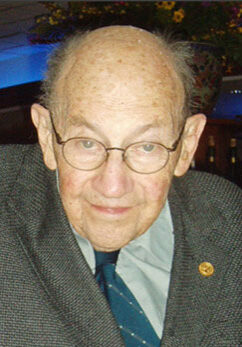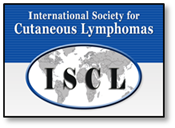MEMORIALS
Dr. Eric Vonderheid2020
It is with a very, very heavy heart that I am writing to you about the passing of a wonderful friend, dedicated researcher, caring physician, and a founding member of the ISCL, Eric Vonderheid.
Eric was truly dedicated to his patients with cutaneous lymphoma, to his colleagues and friends around the world. He was great mentor, thoughtful and kind, with a great sense of humor. His heart was bigger than life, he kept all of us in it. His contributions to the field of cutaneous lymphomas are vast – from classification of erythodermic mycosis fungoides to Sezary syndrome to establishing skin directed therapies, encompassing the whole spectrum of cutaneous lymphomas and their therapies.
He was former Professor of Dermatology and Oncology at Johns Hopkins University and died after a long struggle with prostate cancer on Oct. 24, 2020. He will be deeply missed.
-Larisa Geskin, MD, ISCL President
Obituary:
Eric Carl Vonderheid, M.D., former Professor of Dermatology and Oncology at Johns Hopkins University between 2002 and 2007, died after a long struggle with prostate cancer on 10/24/2020. He was born on 11/3/1942, the only son of Carl G. Vonderheid, Jr., M.D. and Thelma Shaw Vonderheid, and raised in New Kensington, PA. Eric is survived by his loving wife, Kathleen, devoted children Erica Williams of Lakewood, CO and Carl Vonderheid of Blackstone, MA, his sister Nancy Hutchinson, and his grandson Asher Williams. Eric was preceded in death by his wife, Mary Elizabeth Vonderheid.
Eric received his undergraduate education at the Pennsylvania State University and medical degree from Temple University School of Medicine. Eric served in the US Navy for 2 years before starting his dermatology career at the Skin and Cancer Hospital, Temple University and later Hahnemann University in Philadelphia. His research was focused on the study and treatment of lymphomas of the skin. Eric was a founding member of the International Society for Cutaneous Lymphomas.
Eric had a wonderful sense of humor, and a love for life. He enjoyed golf, duplicate bridge and travel and other outings with his wife.
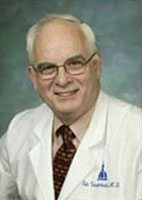
Prof. Dr. Wolfram Sterry2020
On September 19, 2020, our beloved colleague and friend, Prof. Dr. Wolfram Sterry, passed away. In him we lost one of the most passionate clinicians and researchers, who was prominent the field of cutaneous lymphoma for more than 40 years.
Prof. Sterry was born on March 5, 1949 in Marbach, Germany. He studied medicine at the Univ. of Cologne from 1972-1978. In Cologne he met his first teacher in dermatology, Prof. K. Steigleder, with whom he completed his residency in dermatology from 1978-1982. In 1984 he moved to the Univ. of Kiel to become vice chairman at the Dept. of Dermatol. with Prof. Dr. E. Christophers. At the age of 42 he became Chairman of the Dept. of Dermatol.at the university in Ulm. In 1994 he was appointed Chairman of the Dept. of Dermatol. at the Charite in Berlin. In Berlin he developed the Department of Dermatology at the Charité with enormous efforts and vision into one of the most renowned departments of the world.
Prof. Sterry was as a well-respected clinician, and held numerous high-ranking national and international positions in the world of dermatology. Briefly, he was President of the German Dermatologic Society, President of the ESDR, and President of the ILDS, where he contributed with decisive developments in each of these societies.
With regard to research, he found his passion from the very beginning in the field of cutaneous lymphomas. Starting with his PhD thesis on enzymcytochemical analsyses of T-cells in 1978 and following his professorship thesis in 1982 on electronmicroscopical and enzymhistochemical analyses of T cells in cutaneous lymphomas, he continued to enrich this topic with a focus on immunology and molecular biology of cutaneous lymphomas for his entire life.
He was an essential part of the EORTC Cutaneous Lymphoma group, where he served as the president from 1992-1996 and contributed to the absolutely practice-changing EORTC-WHO classification system published in 1997. With his co-worker Peter Walden, he founded in 1997 the International Symposium of Biology and Immunology of Cutaneous Lymphoma (ISBICL), a high-level scientific conference, with focus on basic and translational research. This was the first regular meeting - every three years - of basic researchers and clinicians from around the world, and was frequently the initiator of friendly and interdisciplinary collaborations. In February, 2013 Prof. Sterry organized and chaired the 6th ISBICL and made the 2nd WCCL in Berlin to a remarkable conference, although at this time he was already fighting for his own health.
Prof. Sterry was an enthusiastic clinician, for whom the patient was always the main focus. He indeed lived the approach, "from bench to bedside.“ The Monday evening meetings, in which he brought the whole cutaneous lymphoma team, including clinicians, dermatopathologists, and basic researcher and PhD students together to examine and discuss cutaneous lymphoma patients, will remain unforgettable by all who had the privilege to participate. In his pleasant and comfortable manner, he demonstrated to us the suffering and need of the patients, and stimulated us to give our best in clinic and research.
Prof. Sterry was a visionary and open-minded leader and teacher. His innate discipline and appreciation for life were impressive and did not diminish despite fighting the vicious disease to which he finally succumbed
I am personally grateful to have had the good fortune of having Prof. Wolfram Sterry as an academic teacher and mentor. I appreciated his enthusiasm and determination for science, as well as his inspiring, respectful and friendly approach to people.
He will be dearly missed! Our heartfelt condolences go to his beloved wife Dr. Gerda Sterry, his family and friends from over the world.
- Chalid Assaf on behalf of the ISCL/EORTC CLTF

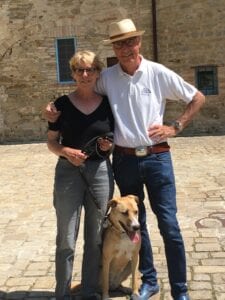
Prof. Wolfram Sterry and his wife,
Dr. Gerda Sterry
Dr. Marie-France Demierre2010
Marie-France Demierre was a highly regarded clinician, researcher, teacher, mentor, colleague and friend.
Dr. Demierre was internationally recognized for her clinical expertise in the management of melanoma and CTCL. She worked at the forefront, participating in numerous multicenter trials of new therapies for advanced melanoma and for CTCL.
Dr. Demierre was internationally recognized for her clinical expertise in the management of melanoma and CTCL. She worked at the forefront, participating in numerous multicenter trials of new therapies for advanced melanoma and for CTCL.
After completing medical school at McGill University in 1995, Marie-France arrived at Boston University to do a Skin Oncology Fellowship under the direction of Dr. Howard Koh. After completion, she returned to her native country of Montreal, only to be recruited back to head the program after Dr. Koh left to become the state's public health commissioner. For 13 years she directed the Skin Oncology Service, rising to the rank of Full Professor in 2008. She cared for patients with melanoma and cutaneous lymphoma, ran the photopheresis program at Boston University, and was a teacher and mentor to medical students, dermatology residents, and her fellows. She was most proud of her collaboration with the Cutaneous Lymphoma Foundation on quality of life issues for cutaneous lymphoma patients, and her work with the Southwest Oncology Group in melanoma prevention. She was very active in the Women's Dermatologic Society (WDS), and served on its board of administrators.
Dr. Demierre passed away on April 13, 2010, after a sudden and unexpected illness. Her birthday was March 6, 1967.
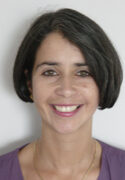
Dr. Herschel S. Zackheim2008
Herschel S. Zackheim received his BA from New York University (NYU) in 1937, his MD from University of Michigan in 1942, did his internship at NYU and completed his Dermatology residency at Wayne State University in 1947. He was on the clinical faculty of Wayne State from 1955-1964, Stanford from 1966-1971 and University of California at San Francisco (UCSF) from 1971-2005. During his time at UCSF, he was Director of both the psoriasis and CTCL clinics as well as maintaining a clinical private practice in Redwood City.
Dr. Zackheim’s contributions to the care of cutaneous lymphoma patients are immense and enduring. He explored the use of topical steroids in MF as early as 1968 (Arch Dermatol 97; 165-172, 1968) and followed up with his years of clinical experience with these agents in 1998 (J. Clin Dermatol 1998: 1(4): 15-20, Arch Dermatol 1998; 134: 949-54) and 2003 (Dermatol Ther 2003; 16: 283-7), establishing the efficacy of these agents for early patch stage MF. Dr Zackheim pioneered the use of topical chemotherapy for MF, introducing topical nitrosureas in 1972 (Arch Dermatol 106; 177-182, 1972) and following this with studies that assessed the absorption, stability and safety of topical BCNU. He published the 10 year (J Am Acad Dermatol 1983: 9: 363-374) and 15 year (J Am Acad Dermatol 1990; 27: 802-10) experience with topical BCNU (Carmustine), establishing the safety and efficacy of this agent as a standard therapy for patch/plaque MF. Dr. Zackheim published several articles on the safety and efficacy issues of topical mechlorethamine beginning in 1973 (Arch Dermatol 107: 429-430, 1973). Dr Zackheim continued his entire career to explore new potential treatments for MF/SS. He is credited with the use of low dose methotrexate for SS and MF (J Am Acad Dermatol 1989; 21: 757-62, J Am Acad Dermatol 1996; 34: 626-31, J Am Acad Dermatol 2003; 49: 873-8) and of publishing on the potential use of a related drug, piritrexim, for MF in 1992 (Arch Dermatol 1992; 128: 561-2).
Dr. Zackheim has demonstrated his acumen as a clinician in the care of patients with cutaneous lymphoma in his published descriptions of the many variants of MF (J Am Acad Dermatol 2000: 43: 793-6.including hypopigmented MF (J Am Acad Dermatol 6: 340-345; 1982), MF presenting in childhood and adolescence (J Am Acad Dermatol 1987; 17: 563-570, J Am Acad Dermatol 1997; 36: 557-62), granulomatous MF (Am J Surg Pathol 1988; 12: 83-95) and mimicers of MF (J Am Acad Dermatol 2202; 47: 914-918), long before these findings were common knowledge. He catalogued the prognosis of the various stages of MF/SS patients seen at UCSF in a seminal article (J Am Acad Dermatol 1999; 40: 418-25) and emphasized the difference in prognosis of patch vs. plaque stage disease, publishing with Drs. Kashani-Sabet, and McMillan a modification of the current staging system to include the potential for separation of patch and plaque disease defined by histology (J Am Acad Dermatol 2001; 45: 700-6.). Dr. Zackheim also championed oncologic assessments and endpoints in the clinical trials of MF/SS and challenged studies that did not include rigorous response criteria and/or active controls or did not utilize intention to treat analysis. He is an author on 149 peer reviewed articles including the most recent one on the Revisions to the Staging and Classification of MF/SS published in 2007 (Blood 10;1182, 2007). He is also the editor of the textbook, Cutaneous T-cell Lymphoma: Mycosis Fungoides and Sezary Syndrome published by CRC Press in 2005, his year of retirement from UCSF.
Dr. Zackheim has been the recipient of many honors for his work in the care of patients with cutaneous lymphoma. He was on the initial Executive Committee of the International Society for Cutaneous Lymphomas from 1992-2000. He was named Practitioner of the Year by the Dermatology Foundation in 1986, San Francisco Dermatology Practioner of the Year in 2000 and received a Certificate of Appreciation by the International League of Dermatologic Societies in 2004. The San Francisco Dermatologic Society established the Herschel Zackheim lectureship on Cutaneous Oncology in 1996.
Dr. Zackheim died at home in Menlo Park on March 3, 2008 at age 94. His birthday was July 27, 1914.
